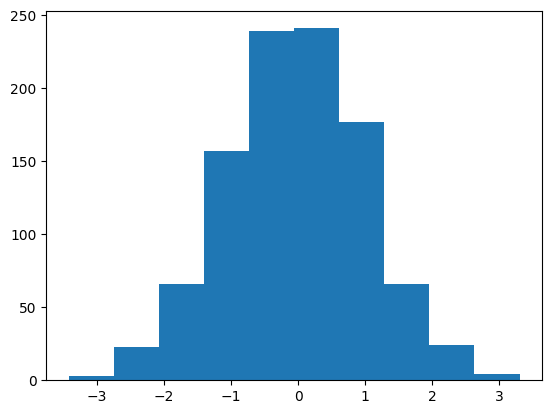Scatterplots#
%matplotlib inline
import matplotlib.pyplot as plt, numpy as np # import statements
squares = [1,4,9,16,25] # dataset for y axis
inputs = [1,2,3,4,5] # dataset for x axis
fig, ax = plt.subplots() # figure for new plot
ax.scatter(inputs, squares, s=100) # generate plot with custom dot size
ax.set_title("Square Numbers") # set plot title
ax.set_xlabel("Value") # set x axis label
ax.set_ylabel("Square of Value") # set y axis label
plt.show() # show output
fig, ax = plt.subplots() # figure for new plot
ax.scatter(inputs, squares, marker='x') # generate plot with custom marker
ax.set_title("Square Numbers") # set plot title
ax.set_xlabel("Value") # set x axis label
ax.set_ylabel("Square of Value") # set y axis label
plt.show() # show output
For more on scatterplots:
Histograms#
A histogram is a type of plot that approximates the distribution of numerical data.
The first step in constructing a histogram is to
binorbucketthe range of values. In other words, we need to divide the entire range of values into a series of intervals.The second step in constructing a histogram is to count how many values fall into each interval.
In a histogram, the bins are usually consecutive, non-overlapping intervals. The bins must be adjacent and are often (but not necessarily) of equal size.
data = np.random.randn(1000) # create randomized dataset
fig, ax = plt.subplots() # create figure
ax.hist(data) # create histogram with default bins
plt.show() # show output

Additional Resources#
For more on histograms:
Bar Charts#
One of the common uses for bar charts is to plot categorial variables. A bar chart presents categorical data with rectangular bars with heights or lengths proportional to the values they represent.
# basic vertical bar chart
data = {'apple': 10, 'orange': 15, 'lemon': 5, 'lime': 20} # dictionary with categories and amounts
names = list(data.keys()) # get category names
values = list(data.values()) # get values
fig, axs = plt.subplots() # create figure
axs.bar(names, values) # create plot
plt.show() # show output
# horizontal bar chart
data = {'apple': 10, 'orange': 15, 'lemon': 5, 'lime': 20} # dictionary with categories and amounts
names = list(data.keys()) # get category names
values = list(data.values()) # get values
fig, axs = plt.subplots() # create figure
axs.barh(names, values) # create plot
plt.show() # show output
Additional Resources#
For more on bar charts and plotting categorical data:
Categorical Data#
This kind of categorical data can be plotted different ways, depending on the type of data and purpose or intent for the visualization. For example, we could plot the fruit data from the previous example as a bar chart, scatter plot, and line plot. An example of those three types side-by-side:
data = {'apple': 10, 'orange': 15, 'lemon': 5, 'lime': 20} # dictionary with categories and amounts
names = list(data.keys()) # get category names
values = list(data.values()) # get values
fig, axs = plt.subplots(1, 3, figsize=(9, 3), sharey=True) # create figure with 3 subplots
axs[0].bar(names, values, color='red') # bar chart
axs[1].scatter(names, values, color='green') # scatter plot
axs[2].plot(names, values) # line plot
fig.suptitle('Categorical Plotting') # figure title
plt.show() # show output
